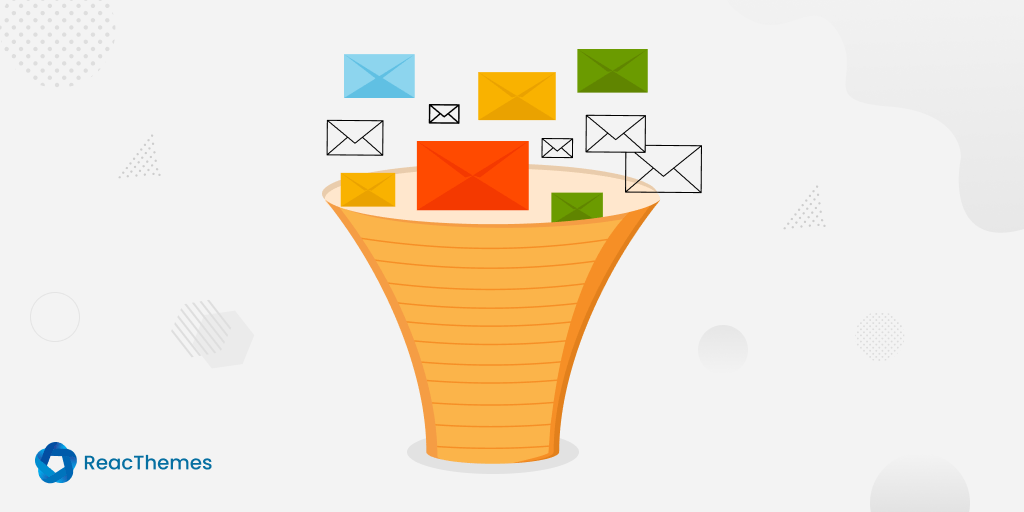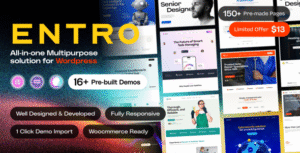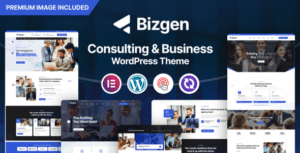These days, email marketing remains one of the most powerful tools for businesses to engage with their audience, nurture leads, and drive sales. An effective email marketing funnel is essential for guiding potential customers through their journey from awareness to conversion and beyond.
But how do you create a funnel that not only captures attention but also builds trust and compels action? This guide will walk you through the essential steps to building an email marketing funnel that delivers results. So, let’s get cracking.
What are Some Effective Lead Magnets for Different Industries?
Effective lead magnets depend on the industry you’re in, but here are some general ideas that can be adapted across different fields:
General lead magnets
- Ebooks/Whitepapers: Offer in-depth information on a relevant topic to your audience. This is a good option for industries like finance, healthcare, or marketing where there’s a lot of valuable knowledge to share.
- Checklists/Templates: Provide practical tools that can help your target audience with a specific task. This could be anything from a social media content calendar template for a marketing agency to a home improvement checklist for a construction company.
- Webinars/Demos: Host an online event or demonstration showcasing your expertise and the value you offer. This is a great way to engage potential customers in real-time, especially for industries like software or education.
- Case Studies/Testimonials: Showcase successful results you’ve achieved for past clients. This builds trust and credibility with potential customers, and is effective in industries like professional services or B2B sales.
Industry-specific lead magnets
- Ecommerce: Free shipping on first order, exclusive discounts, or product guides.
- Healthcare: Nutritional guides, healthy recipe ebooks, or symptom checker quizzes.
- Fitness: Workout routines, meal plans, or free trial memberships.
- Travel: Destination city guides, packing checklists, or travel budget templates.
How to Build an Email Marketing Funnel
Building an email marketing funnel involves several steps to attract, engage, and convert subscribers into loyal customers. Here’s a comprehensive guide to creating an effective email marketing funnel.
i. Define your goals
Identify your objectives clearly. Determine whether you want to drive sales, increase sign-ups, or boost brand awareness. Set specific metrics to measure success, such as open rates, click-through rates, conversion rates, and revenue.
ii. Understand your audience
Create detailed buyer personas to understand your ideal customers, including their demographics, interests, pain points, and buying behaviors. Segment your audience based on these criteria to deliver more personalized and relevant emails.
iii. Attract subscribers
Create compelling lead magnets like ebooks, checklists, or exclusive discounts that provide value to your potential subscribers. Use sign-up forms strategically placed on your website, blog, and social media channels to capture email addresses.
iv. Create a welcome series
Develop a series of welcome emails to introduce new subscribers to your brand. In your first email, thank them for subscribing and deliver the promised lead magnet. Follow up with additional emails that share your brand story, highlight your best content, and showcase your products or services.
v. Nurture your leads
Send regular emails to nurture your subscribers and keep them engaged. Share valuable content such as blog posts, how-to guides, case studies, and industry news. Include calls to action that encourage further engagement, like visiting your website or following you on social media.
vi. Convert leads into customers
Design targeted email campaigns that promote your products or services. Highlight the benefits and features, use persuasive copy, and include clear calls to action. Consider using limited-time offers or exclusive discounts to create urgency.
vii. Segment and personalize
Utilize the data you’ve collected to segment your audience based on their behavior, preferences, and past interactions. Personalize your emails by addressing subscribers by name, tailoring content to their interests, and sending relevant product recommendations.
viii. Automate your emails
Use an email marketing platform to automate your email sequences. Set up workflows that trigger emails based on specific actions, such as welcome emails for new subscribers, follow-ups for abandoned carts, or thank you emails for purchases.
ix. Test and optimize
Regularly test different elements of your emails, such as subject lines, content, images, and calls to action. Analyze your email performance data to identify what works best. Continuously optimize your emails based on these insights to improve engagement and conversions.
x. Analyze and report
Monitor your email marketing performance by tracking key metrics like open rates, click-through rates, conversion rates, and revenue. Generate regular reports to understand the effectiveness of your email marketing funnel and identify areas for improvement.
xi. Maintain compliance
Ensure your email marketing practices comply with relevant regulations, such as GDPR, CAN-SPAM Act, and CASL. Provide clear options for subscribers to opt out or manage their email preferences, and respect their choices to maintain trust and credibility.
How do I Segment My Email List for Better Engagement?
Segmenting your email list can significantly enhance engagement by ensuring that the content is relevant to the recipients. Here’s a step-by-step guide to help you segment your email list effectively.
1. Collect relevant data
To effectively segment your email list, start by gathering relevant information about your subscribers. This data can include demographics such as age, gender, location, and occupation. Additionally, behavioral data like purchase history, website activity, and email open or click rates is crucial. Understanding subscriber preferences, including interests, product preferences, and email frequency preferences, is also important. Lastly, categorize subscribers based on their engagement levels, such as active, inactive, or VIP customers.
2. Define your segmentation criteria
With the collected data, define criteria that align with your marketing goals. Geographic location is a useful criterion to tailor content based on regional interests or events. Purchase history allows you to target customers based on their past purchases or browsing behavior. Engagement level helps in sending re-engagement campaigns to inactive users or exclusive offers to highly engaged subscribers. Consider the customer lifecycle stage to differentiate between new subscribers, potential customers, and loyal customers. Finally, use preferences and interests to customize the content you send.
3. Create targeted content
Once you’ve defined your segments, create tailored content for each group. For geographic segments, include local events or region-specific promotions. For segments based on purchase history, recommend products similar to past purchases or offer discounts on items left in their cart. For engagement-based segments, send reactivation emails to inactive users or exclusive previews to highly engaged subscribers. For lifecycle stages, introduce new subscribers to your brand with welcome emails, nurture potential customers with informative content, and reward loyal customers with special offers. For preference-based segments, ensure the content matches their stated interests and preferred email frequency.
4. Test and refine
After implementing your segmentation strategy, monitor the performance of your emails. Track open rates, click-through rates, and conversion rates for each segment. Use this data to refine your segments and improve future campaigns. Experiment with different types of content, sending times, and offers to see what resonates best with each segment. Continuously gather feedback and adjust your segmentation criteria as needed.
5. Automate your segmentation
Utilize email marketing software to automate your segmentation process. Many platforms offer features that automatically update segments based on subscriber behavior and interactions. This ensures your segments are always up-to-date and relevant. Automation also allows you to set up triggered emails that respond to specific actions, like welcoming a new subscriber or re-engaging an inactive one.
What are The Key Metrics to Track in an Email Marketing Funnel?
In an email marketing funnel, tracking key metrics is essential for understanding and optimizing performance. These metrics provide insights into various stages of the funnel, from initial engagement to final conversion.
Firstly, the open rate is a critical metric. It indicates the percentage of recipients who opened the email, reflecting the effectiveness of your subject line and the initial appeal of your email. High open rates suggest that your subject lines are compelling and your audience is interested in your content.
Next, the click-through rate (CTR) is vital. It measures the percentage of recipients who clicked on links within the email. This metric shows how well your email content and calls-to-action resonate with your audience. A high CTR indicates that your content is engaging and that your audience is motivated to take the next step.
Conversion rate is another key metric. It tracks the percentage of recipients who completed a desired action, such as making a purchase or filling out a form, after clicking through your email. This metric is crucial for assessing the effectiveness of your email in driving actual business outcomes.
The bounce rate is important as well. It represents the percentage of emails that could not be delivered to recipients’ inboxes. High bounce rates can indicate issues with your email list quality or deliverability problems that need to be addressed.
Unsubscribe rate is a critical metric to monitor. It shows the percentage of recipients who opted out of your email list after receiving an email. A high unsubscribe rate can signal that your content is not meeting subscriber expectations or that you are sending emails too frequently.
List growth rate is also significant. It measures the rate at which your email list is growing, accounting for new subscribers and unsubscribes. A steady or increasing list growth rate indicates successful list-building efforts and audience interest.
Additionally, tracking the email sharing/forwarding rate is beneficial. This metric measures how often your emails are shared or forwarded by recipients, reflecting the virality and value of your content.
Revenue per email is a crucial metric for businesses focused on sales. It calculates the average revenue generated from each email sent, providing a direct link between your email campaigns and revenue performance.
Finally, the overall return on investment (ROI) of your email marketing efforts is essential. It compares the revenue generated from email marketing to the costs incurred, helping you assess the financial effectiveness of your campaigns.
Final Thoughts
Building an effective email marketing funnel is both an art and a science. It requires a deep understanding of your audience, strategic planning, and consistent execution. By following the steps outlined in this guide, you can create a funnel that not only captures leads but also nurtures them into loyal customers.








